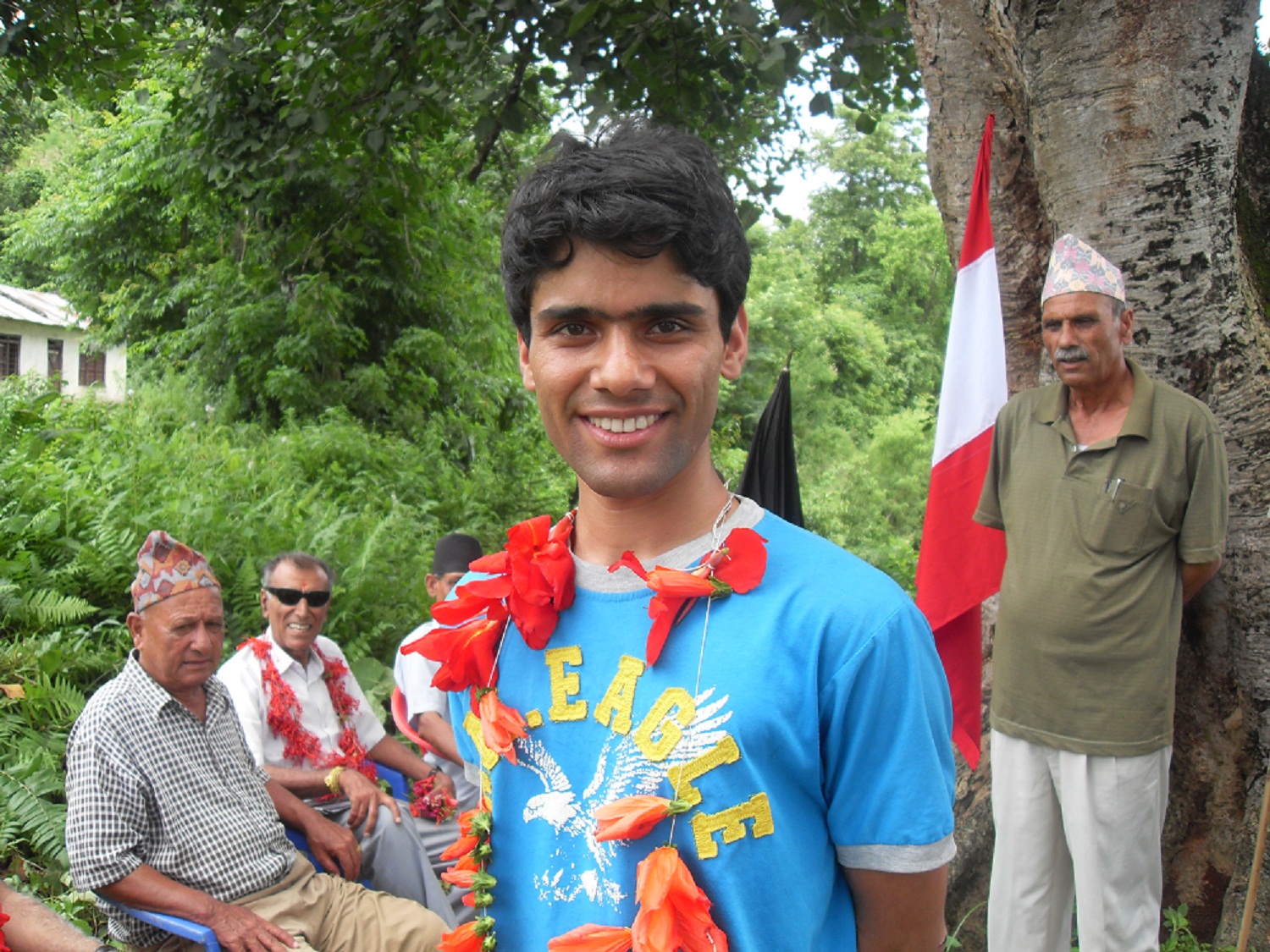Help Rebuild an MIT-Inspired School Destroyed by Nepal's Earthquakes
-
-
slice.mit.edu
Filed Under
Recommended

When Ram Rijal ’12 graduated from MIT, he literally couldn’t wait to return to his native Nepal. He left campus on June 5, 2012—three days before his June 8 Commencement.
After all, when your goal is to create a network of MIT-inspired magnet schools and the next academic year has already started, there’s no time to waste.
“Nepal has experienced the worst forms of youth manipulation for years,” Rijal said. “Political forces manipulate young people. There’s no access to quality education for 90 percent of the population—especially girls. It’s the exact opposite of the MIT environment.”
Rijal grew up in rural Rukum, where 90 percent of the village is illiterate and the closest bus stop was a two-day walk. When he was 10, he earned a government scholarship to study in Kathmandu, and later earned scholarships to attend secondary school in the United Kingdom and study at MIT.
“My experience was rare,” Rijal says. “It almost never happens. And the more I studied, I realized a common theme of successful students was what I call ‘practicing passion’: students do what they love—like math or programming—starting at early age. I saw people who were both happy and successful.”
From those experiences, the Bloom Nepal School was born. Rijal worked alongside childhood friends who were also exposed to an early education to found Bloom Nepal in 2013. The STEM-focused K–12 school is privately subsidized and fully residential, and its curriculum includes courses from edX and Khan Academy.
“The school truly is an amazing place,” says Uddhav Sharma ’15, who is from Solukhumbu, Nepal. “The whole idea was inspired by MIT. Two of my nieces are enrolled—they were extremely happy. It’s providing an education to many people who would have never received it otherwise.”
The school’s first-year enrollment was 17 students and ballooned to 60 students in 2014. More than 150 students from nearly all of Nepal’s 75 districts enrolled for the school’s third academic year, which was scheduled to start on April 28, 2015. But, on April 25, disaster struck.
The worst disaster in 80 years
At 11:56 a.m. on Saturday, April 25, 2015, nearly all of Nepal was rocked by a 7.8 magnitude earthquake that killed nearly 9,000 people and injured more than 23,000. A second major earthquake, measured at 7.3, hit on May 12 and killed more than 100. It was the country’s worst disaster in more than 80 years, and countless aftershocks followed.
Two of the school’s janitors were killed, and all of Bloom Nepal’s buildings and classrooms were destroyed.
“Not all of the students had come to school yet so the building was not full,” Rijal says. “The students who were in the building had a narrow escape. Five second later—they would not have made it.”
The earthquakes' aftermath left nearly every building around Kathmandu unstable and the country’s annual monsoon season had just begun. Many of Bloom Nepal’s students returned home and the remaining students (about 50) were placed in tents.
“The students were in major shock for a long time,” Rijal says. “And the aftershocks didn’t stop. They’re slowing coming around, but it’s had a huge emotional impact on everyone.”
Classes began a few weeks after the earthquake. The school’s temporary structure is ill-suited for learning, and the school is working to move to a more classroom-friendly location in nearby Lubhu.
“This earthquake will not stop us,” Rijal says. “We’re pushing the recovery forward. We believe in the power of human capital and how important this school can be.”
Rebuilding in Bloom
“Since the day he returned to Nepal, Ram’s passion has been that school,” says Professor Jeffrey Ravel, who visited the school in 2014. “He had high-paying offers to remain in the U.S., but he was determined to train a cadre of scientists and engineers who would work toward a better future for Nepal, regardless of their gender, caste, or socio-economic status.”
The country and the school have long recoveries. The earthquakes left Nepal’s already-weak economic infrastructure in even worse shape. And the need for a school like Bloom Nepal, and the future leaders that it trains, is even greater.
“Bloom is much more than a school—it’s a bold vision,” says doctoral student Bigyan Bista, a member of the Nepali Students’ Association at MIT who has helped raise more than $36,000 for immediate earthquake relief. “A STEM-focused school with an MITesque vibe can herald a paradigm shift in Nepal education. But it needs a lifeline now.”
Rijal anticipates that the school need about $120,000 USD to cover the reconstruction of the school, including dormitories, classrooms, labs, and staff rooms. The school has partnered with the Society of Ex-Budhanilkantha Students (SEBS), a 501(c)3 tax exempt charitable organization, and raised more than $29,000 USD as of June 9, 2015.
“We built this school with the idea of making the country ‘bloom’ by providing quality education to children from even the poorest families,” he says. “We realized everyone has a passion. So let’s use that passion to create living experts who have a huge contribution to the development—and recovery—of Nepal.”
Donate to the Bloom Nepal recovery at bloomn.org/donate-now/. For more information, email Ram Rijal at rrijal@alum.mit.edu or visit Bloom Nepal's website or Facebook page.







